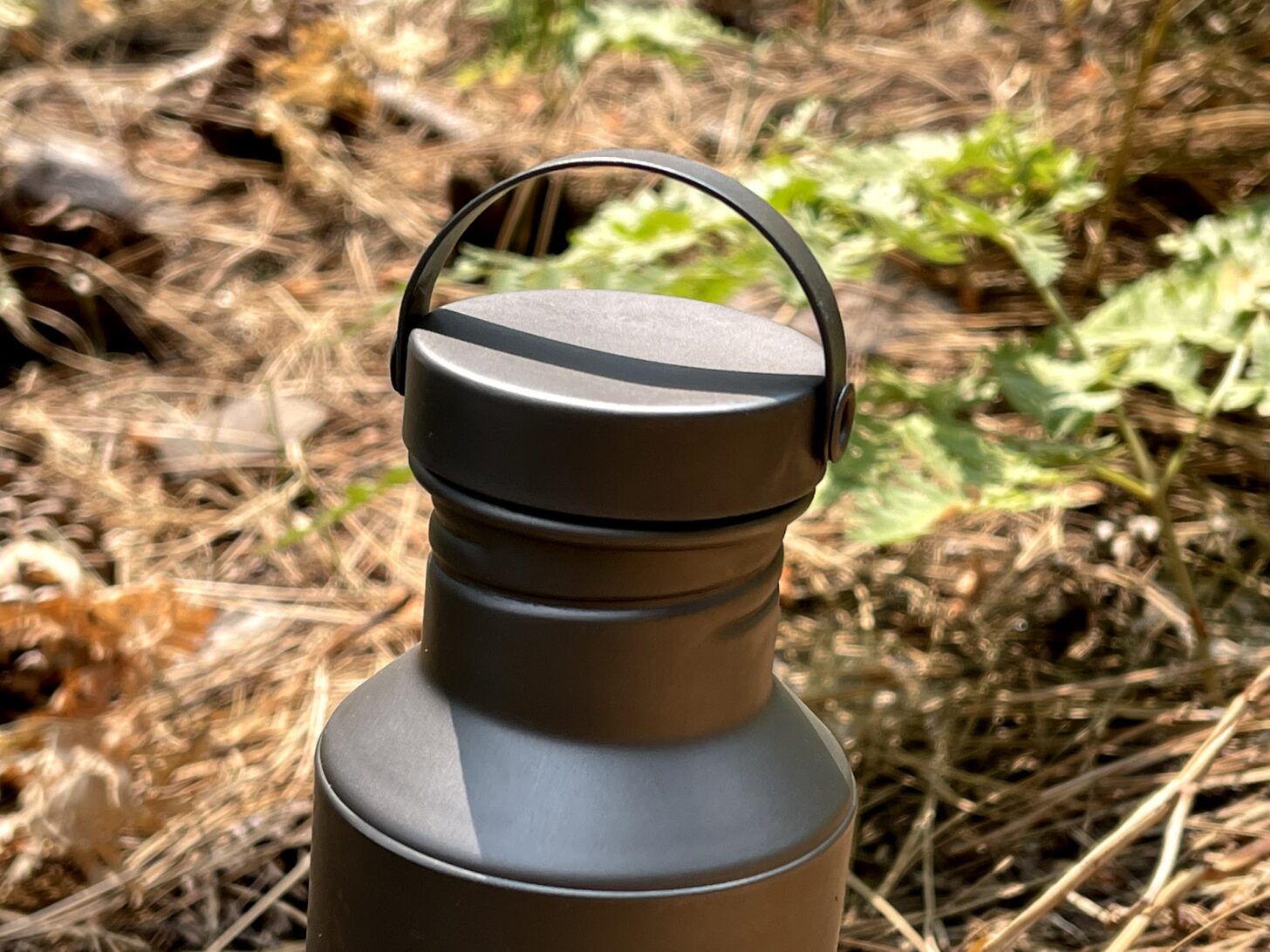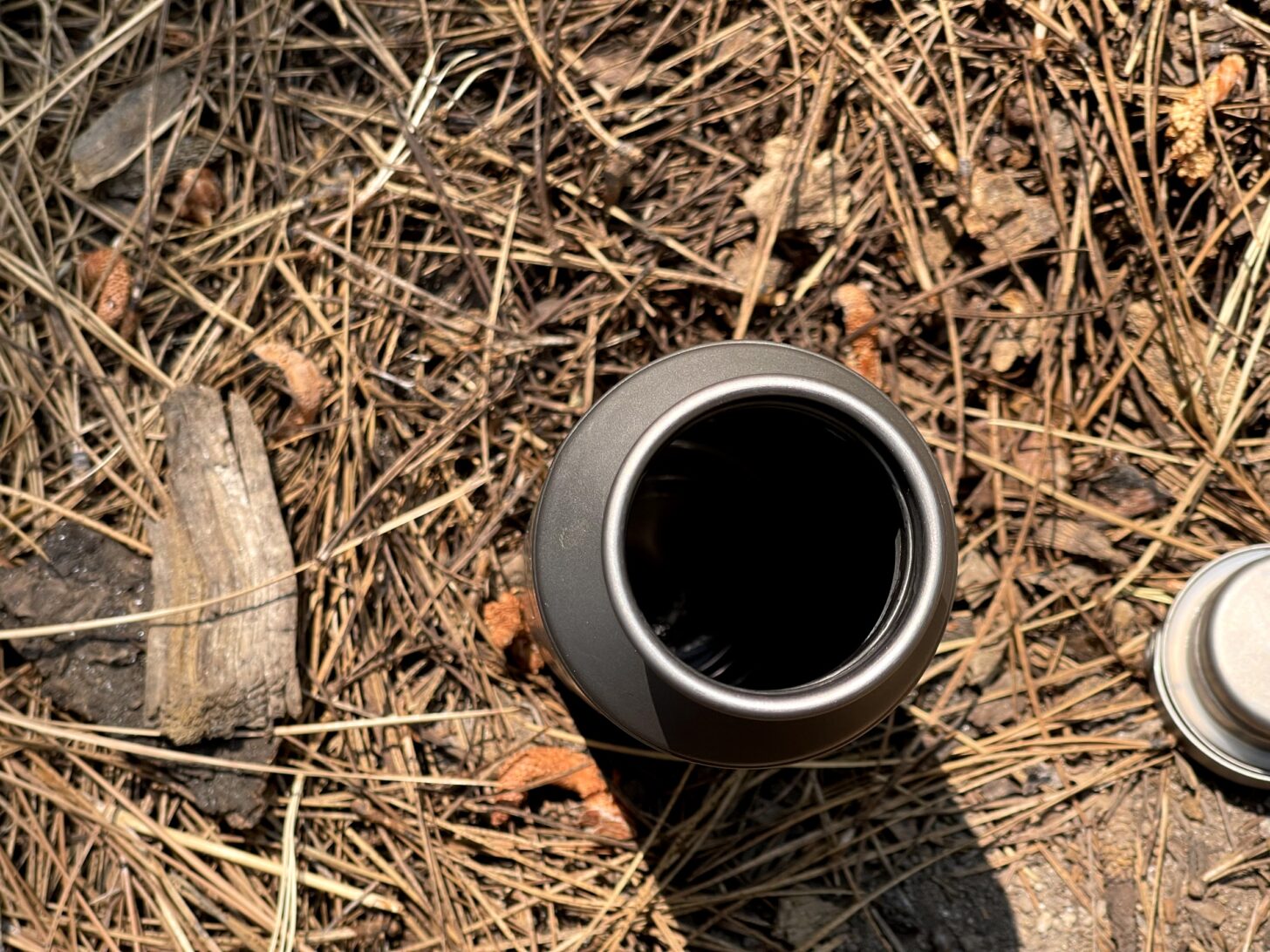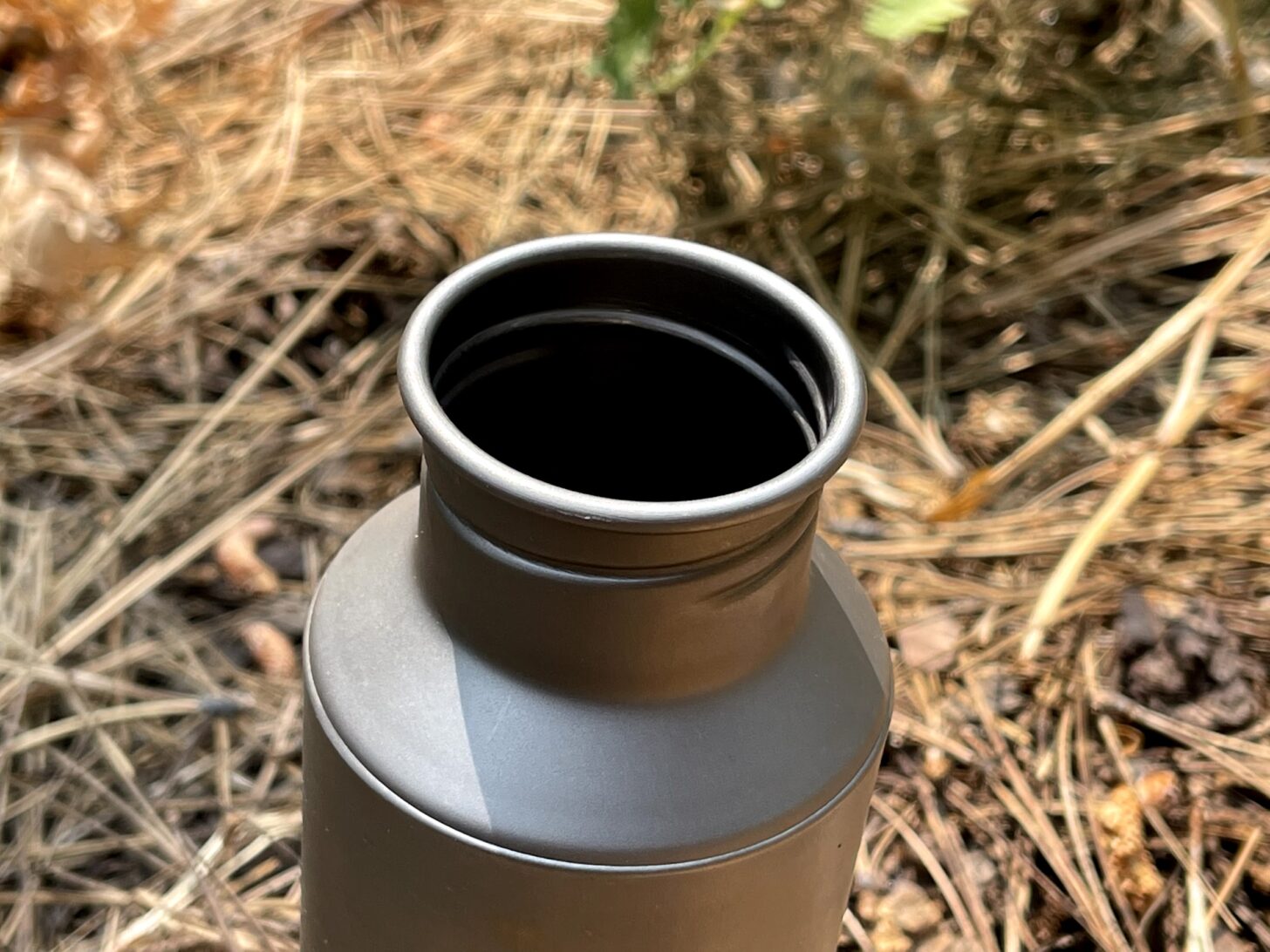In Defense of my Insanely Expensive Purchase
This article will technically be a First Looks review – heavy on photos with a few observations about the Vargo Titanium Water Bottle. But before I get to the formal review I feel the need to explain why I decided to purchase (two!) $85 titanium water bottles in the first place.
I will absolutely be the first to admit that $85 is a ridiculous amount to spend on a water bottle – even if you are relatively well off and financially secure (I’m a writer and my wife is a teacher, so, spoiler alert, I’m not). If I were reading this review on another website I’d likely just ignore it completely because:
- a combined $170 is halfway towards a medium-range DCF shelter
- I rarely – if ever – have $85 to put towards new gear, and when I do it tends to be replacing clothing that I’ve worn out or destroyed while backpacking
- Smartwater bottles are under $5 and last a relatively long time – if it ain’t broke, don’t fix it
- many (if not most) professional gear writers receive their testing products for free
This last point is especially salient to me. Even with the best intentions and rigorous journalistic ethics, it can be difficult for a gear reviewer to make accurate cost-benefit analyses, especially if you’ve been at it for a while. You start to take high-end gear for granted. I remember my days of backpacking with a hand-me-down pack, the same cheap-and-heavy synthetic sleeping bag I’d been using since high school, and a fleece I bought for ten bucks from TJ Maxx. But only vaguely.
That’s why I decided to purchase two Vargo Titanium Water Bottles instead of requesting media samples – I wanted to know if such a simple product at such an astronomical price point was actually worthwhile. Is it a useful piece of gear, or one of those stripped-down, overpriced, trendy-minimalist products aimed at people who listen to Silicon Valley software engineer podcasts?
And I’ll tell you – it hurt me to buy these bottles. I have a tattered envelope in my desk drawer where I keep the spare cash I earn from my side gig as a fine artist. I normally use it to treat my wife and me to pizza and beer after a particularly hard week. Emptying out that envelope was physically painful, not to mention that it put me in danger of ticking off my wife.
So trust me when I say this: my cost-benefit analysis of this product is as accurate as it can possibly be and as free as I can make it from the media bias introduced by getting free or discounted gear.
The Confusing Environmental Elephant
I’ve been playing around with alternatives to disposable water bottles for a while. The last time I wrote about my experiments it kicked off a rousing discussion on the environmental impacts of utilizing single-use plastic bottles for backpacking. It’s an astonishingly nuanced debate, particularly if you are a millennial like me who was trained, essentially from birth, to recycle plastic when you can and not buy it at all if possible. When do Smartwater bottles begin to fall apart? When do they start to grow bacteria? When do they begin leaching chemicals? How effective is recycling in America anyway? Didn’t most of our recycling used to get shipped to China? What happens to it now? What’s the carbon cost of using, say, 12 SmartWater bottles over the course of a 3-month thru-hike vs. something made from a sturdier plastic or metal? And shouldn’t we be directing most of our environmental attention away from individual consumers and towards large industries – particularly the fossil fuel industry?
Some of these questions depend upon use-cases and some are only answerable by more intelligent people than me – specialists in their field or folks whose background includes more math and less art history. Some of these questions seem to not be answerable at all, at least for the moment.
Sometimes you just have to make a personal choice and hope it’s the right one. So it is with me and single-use plastics. I use bamboo toothbrushes. I don’t use plastic razors with throw-away blades. And I no longer use Smartwater bottles. Is this mathematically or environmentally the correct decision? Does it actually accomplish anything? Is it, somehow, worse? I certainly know that somebody somewhere had to mine the ore for a titanium water bottle. Where did that happen? What were the conditions like in the factory where the raw metal was turned into a bottle? Does Vargo’s HR department treat its workers well? I don’t know the answer to any of these questions. All I can do is make the next right choice at every opportunity.
So I invested in an extremely expensive water bottle that is heavier than a single-use plastic bottle but lighter than any other option that I know of. It is virtually indestructible and – unlike pretty much any other piece of backpacking gear I own – will last me for the rest of my life. It may never end up in a landfill.
That feels good to me. Your mileage may vary, but it feels like the next right choice from a philosophical standpoint and, yes, an environmental one.
But I’m willing to admit that the latter might be because I have the ghost of Captain Planet yelling at the part of my brain that’s still five. C’est la vie. I’m doing the best I can.
Vargo Titanium Water Bottle Review
The Vargo Titanium Water Bottle (MSRP: $85, 3.9 oz / 111 g) is a 650 ml (22 oz) water bottle constructed of grade 2 titanium. It features a screw-on titanium lid, a silicone O-ring, a matte finish, a 44 mm (1.7 in) mouth, and a tall, narrow construction designed to slide easily into pack pockets.

Highlights
- 3.9 oz (111 g)
- MSRP: $85
- grade 2 titanium construction
- tall, skinny construction fits into pack pockets well
- 650 ml (22 oz) capacity
- minimally threaded metal cap design
- 44 mm (1.7 in) mouth
- cap features a foldaway carry loop
- Vargo ships quickly (within 24 hours) and my customer service experience with them was excellent (my initial order was incorrect and they fixed it immediately)
Testing Context
I’ve already gone into my reasons for being interested in the Vargo Titanium Water Bottle in great detail. (If you skipped it, you might want to pop back up to the top and give it a read). The Vargo Titanium was my bottle of choice for my summer backpacking and bikepacking season – though that season was cut short by smoke and land closures related to the Dixie and Caldor fires in the Sierra Nevada.

In the end, I got about 15 use-days while backpacking, 7-use days while bikepacking, and over 50 use-days on day hikes. The Vargo Titanium Water Bottle is also my daily water bottle.
First Impressions
Strengths
The Vargo Titanium Water Bottle is emblematic of everything I’m looking for in ultralight backpacking gear: simple, streamlined, lightweight, effortlessly functional, and very, very tough.
The 650 ml (22 oz) bottle is tall and skinny, designed to fit easily into pack pockets and bottle cages. The minimally threaded lid unscrews with two turns. The foldaway handle sits flush with the lid until needed. It’s dishwasher safe and has a moderately wide 44 mm (1.7 in) mouth – both of which make cleaning for storage and long-term use simple. An added bonus of the wide mouth is that it’s easy to spoon chia seeds or powders into the bottle without causing a mess.
The extra ~3 oz (24 g) of weight over a plastic bottle buys a lot of utility. The titanium can, obviously, hold hot or boiling water with much more certainty and safety than a thin plastic bottle – a feature that has all kinds of applications in wilderness first-aid situations. You could even boil water in it (though you’d really have to be in a pinch to make the attempt). All of the above goes for any single-layer (i.e., non-vacuum sealed) metal water bottle. The Vargo Titanium Water Bottle stands out because it is, well, made of titanium. Titanium has long-term food-safe properties, a clean aesthetic, and a superior strength-to-weight ratio over steel or aluminum.
This last item is the most obvious strength of the Vargo Titanium Water Bottle.
Limitations
An opaque bottle has its drawbacks, mostly when it comes to cooking or water-use management. Backpackers with lots of backcountry cooking experience are likely able to eyeball needed water measurements, but beginners or backcountry chefs with a precise frame of mind might find the lack of measuring ability frustrating.
Using two 650 ml (22 oz) bottles gets you to 1.3 L (44 oz) of storage capacity. Unless you are backpacking in regions unaffected by drought, or you are backpacking routes where water sources are prolific, you may need more storage capacity than that. I solve two problems at once by pairing my Vargo Titanium Bottles with a HydraPak RECON 1L bottle, which gives me both a way to measure my cooking water and an extra liter of storage. You could also just use a soft bladder-type storage solution.
I also find opaque bottles to be a bit of a psychological advantage. There are definitely times when I’d prefer not to see what’s swirling around in my water bottle.
Hard-sided bottles don’t play well with hollow-fiber squeeze-based filter systems. I’m not a fan of those systems (I use Aquamira or a Steripen), so that isn’t really an issue for me.
If you take winter trips in cold climates, metal bottles can be problematic. The Nalgene 24 oz Sleeve is a neoprene sleeve that, according to Vargo, fits the Titanium Water Bottle like a glove. It will cost you 4.8 oz (136g). Backpacking Light publisher Ryan Jordan has a DIY solution that’s lighter – his Reflectix cozies for 1-liter water bottles (referenced in this article about winter gear) weigh only 1.4 oz (40 g) each.
The silicone O-ring, the only part of the bottle that isn’t made of titanium, may need replacing after a few years. An after-market replacement should be fairly simple to find – a few seconds of Googling got me to this website.
Photos




The Takeaway
I’m not advocating that every ultralight backpacker needs to buy the Vargo Titanium Water Bottle. As with every gear purchase, consider your use cases, budget, and how the gear in question interfaces with the rest of your kit. The Vargo Titanium Water Bottle’s cost may be prohibitive to any backpacker who doesn’t already have their kit precisely dialed. This water bottle, is, in essence, a financial luxury – one I’m privileged to be able to afford. And it is not without drawbacks – it’s a few ounces heavier than the ultralight standard of single-use plastic bottles, it’s opaque, it’s hard-sided, and it only holds 650 ml (22 oz) of water. I consider some of these drawbacks to be advantages, but you may not.
I happened to be in a moment of life when I could afford the purchase, though as I said earlier in this piece, that decision was not without a little hesitation. Having now tested the bottle for a summer, I don’t regret my decision. That cost-benefit analysis I mentioned at the top of this piece comes out on the plus side – for me. The Vargo Titanium Water Bottle matches my needs and my kit – and at the end of the day, the cost is worth it, because I’ll never have to buy another single-use plastic bottle ever again.
Related Content
- read Andrew’s review of the HydraPak Flux 1L water bottle
- check out Ryan Jordan’s extensive Ultralight Water Treatment Options for Backpacking article
Research and Discover
DISCLOSURE (Updated April 9, 2024)
- Product mentions in this article are made by the author with no compensation in return. In addition, Backpacking Light does not accept compensation or donated/discounted products in exchange for product mentions or placements in editorial coverage.
- Some (but not all) of the links in this review may be affiliate links. If you click on one of these links and visit one of our affiliate partners (usually a retailer site), and subsequently place an order with that retailer, we receive a commission on your entire order, which varies between 3% and 15% of the purchase price. Affiliate commissions represent less than 15% of Backpacking Light's gross revenue. More than 70% of our revenue comes from Membership Fees. So if you'd really like to support our work, don't buy gear you don't need - support our consumer advocacy work and become a Member instead.
- Learn more about affiliate commissions, influencer marketing, and our consumer advocacy work by reading our article Stop wasting money on gear.




Home › Forums › Vargo Titanium Water Bottle Review